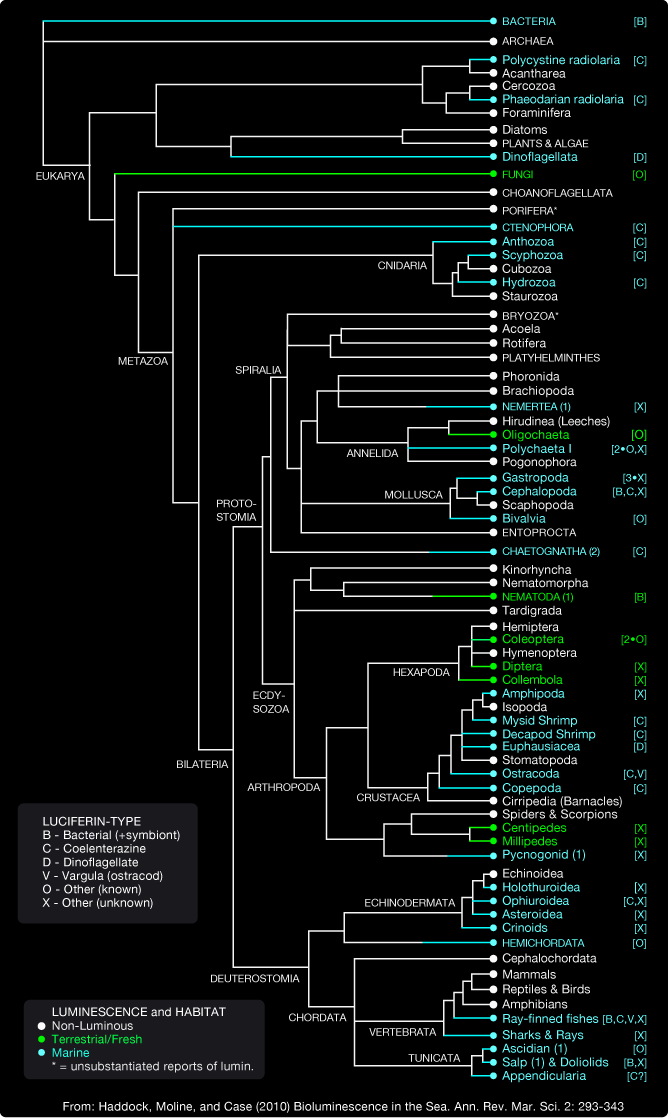| Marine bioluminescence is produced by an incredible range of organisms, from bacteria and single-celled protists to fish and squid. | ||
|
Some especially interesting examples are:
|
||
|
Here is one possible phylogenetic tree showing the distribution of bioluminescence across the "Tree of Life". Neither the tree nor the taxa identified as luminous are set in stone, and there is already new information on both aspects. However, note how many times bioluminescence appears to have arisen (more than 40, considering that one group of organisms may have several different chemistries.) It is a remarkably broadly distributed phenomenon. (Below the tree you will find a partial text list of bioluminescent organisms.)
Download the reference article. (2.2 MB file.) Below is a partial text list of bioluminescent organisms. (The tree above is more comprehensive.) If an organism is listed here it means that at least one species in that group is luminescent, not that all such creatures make light.
This list is intended to give an idea of the diversity of bioluminescent creatures. It is not meant to be comprehensive, and there may be other luminous creatures which are not included here.
|
[Download printable PDF version of this page]
| E-mail  .
.
